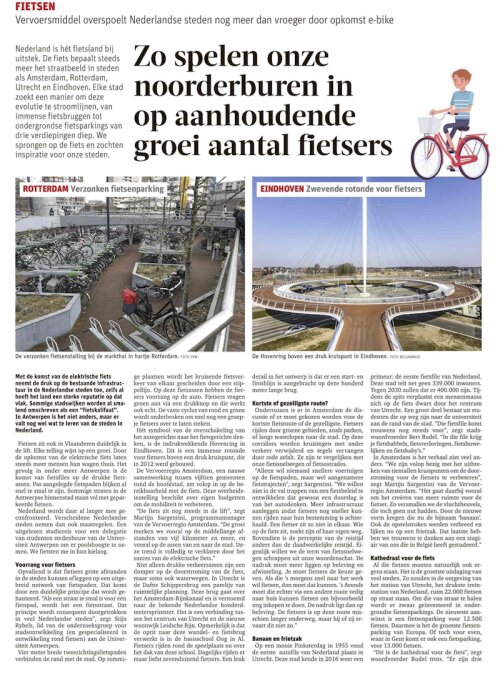There is no systematic integration of mobility and urban planning in Flanders, especially not when it comes to cycle infrastructure. However, the technical knowledge for developing cycle infrastructure is extensive (e.g. Vademecum fietsvoorzieningen) .These technical requirements generate efficient, safe and comfortable cycle routes. But they do not contribute to the relation between infrastructure and its urban context and therefore fail to reveal the full potential of high quality cycle infrastructure for urban neighborhoods. The presence of bicycle amenities such as parking lots, a traffic regulation adapted to cyclists, the design of crossroads, the spatial and urban integration,… all contribute to the attractiveness and the bikeability of our cities. New concepts such as bicycle highways and corridors are leading towards the transition to an urban infrastructure designed for cyclists. The concept of bikeability is a new concept that goes beyond the design of the cycle infrastructure itself, but that tries to design and develop the entire urban space from a cyclists’ perspective. Thus, bikeability implies a Bicycle Oriented Development (BOD)
Additionally, the master students in Urban and spatial planning explored the potentials of bicycle oriented developments in the area between Antwerp South railway station and the city of Malines. By implementing the methodology of Research by Design in a setting of co‐production with local stakeholders, this project tries to contribute to a widely supported vision on bikeable urban neighborhoods.
Researcher(s): Stijn Rybels, Jolein Bergers
Period: 2016 - today

Fieldtrip - Together with master students in Urban and spatial planning we visited five cycling cities in the Netherlands (Eindhoven, Utrecht, Houten, Amsterdam and Rotterdam). Each city has its own strategy to encourage cycling. (image of the High Tech Campus in Eindhoven)

Expert workshop

Assessment framework - methodology

Lessons from the Netherlands (news paper)